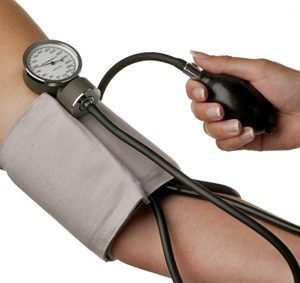 In the US and other developed countries it is generally accepted that blood pressure increases with age - that a blood pressure rise starts in childhood and that it's a normal part of aging. However, a new study found that this is not true - a South American rainforest tribe (the Yanomami) who do not eat a western diet (at all!) and have an active lifestyle, have the exact same blood pressure throughout life. This was true for all the individuals studied - from age 1 to 60. A nearby village of the Yekwana tribe have some western influences on lifestyle and diet, had the same low blood pressure in childhood, but showed increases with age.
In the US and other developed countries it is generally accepted that blood pressure increases with age - that a blood pressure rise starts in childhood and that it's a normal part of aging. However, a new study found that this is not true - a South American rainforest tribe (the Yanomami) who do not eat a western diet (at all!) and have an active lifestyle, have the exact same blood pressure throughout life. This was true for all the individuals studied - from age 1 to 60. A nearby village of the Yekwana tribe have some western influences on lifestyle and diet, had the same low blood pressure in childhood, but showed increases with age.
The researchers feel that a Western diet and lifestyle play a role in the blood pressure increasing over the life span. They are now looking at the gut microbes of the two tribes to see what role they have in these blood pressure differences. Bottom line: get off your butt and get active, and eat a high fiber, whole food diet (to feed the beneficial microbes) - and avoid highly processed foods if you can. Easier said than done. From Science Daily:
Study of two tribes sheds light on role of Western-influenced diet in blood pressure
A South American tribe living in near-total isolation with no Western dietary influences showed no increase in average blood pressure from age one to age 60, according to a study led by researchers at Johns Hopkins Bloomberg School of Public Health. In comparison, a nearby tribe whose diet includes some processed foods and salt did show higher blood pressure into late middle age.
In the U.S. and most other countries, blood pressure rises with age, beginning early in life. Results of this study support the idea that the tendency in Westernized societies for blood pressure to rise with age is not a natural part of aging but could result from a cumulative effect of exposure to Western diet and lifestyle.
For their study, the researchers took blood pressure measurements from 72 Yanomami aged one to 60, and found no trend towards higher or lower readings as the participants aged. The researchers also measured blood pressure in 83 members of the nearby Yekwana tribe, which is more exposed to Western influences including dietary -- and here they found a clear trend towards higher pressure with advancing age.
The Yanomami live as hunter-gatherers and gardeners in a remote rainforest region of northern Brazil and southern Venezuela. Their diet is low in fat and salt and high in fruits and fiber. Studies of adult Yanomami since the 1980s have shown that atherosclerosis and obesity are virtually unknown among them, and that they have extraordinarily low blood pressure on average, with no apparent increase as they age.
The new study reveals that this age-stability of blood pressure among the Yanomami starts in early childhood. It is the first to compare the Yanomami to a geographically co-located population -- the Yekwana -- that has had a different exposure to Western diet and other Western lifestyle influences.
The researchers, examining members of Yanomami villages in southern Venezuela, found that their blood pressure measurements averaged 95 (mm Hg) systolic over 63 diastolic. (In U.S. adults, the average systolic is 122 and diastolic 71.) This low figure among the Yanomami is consistent with prior studies in Yanomami adults, but the researchers measured roughly the same blood pressure among Yanomami children as well. In fact, the data suggest that blood pressure in this population remains close to the same low level from age one at least through age 60, with no trend towards an increase or decrease.
In contrast to the Yanomami, the Yekwana have been exposed to some aspects of Western lifestyle and diet, including processed foods, through interaction and trade with the industrialized world. While blood pressure readings at the youngest ages were virtually the same as those for their Yanomami peers, there was a statistically clear trend towards rising levels with advancing age -- roughly 0.25 mm Hg per year -- such that the Yekwana had levels averaging 5.8 mm Hg higher by age 10, and 15.9 mm Hg higher by age 50.
"This age-related rise in blood pressure begins in early childhood -- which suggests that early childhood may be a 'window of opportunity' for lifestyle interventions to prevent later rises in blood pressure," Mueller says. To put these findings in context, in the U.S. systolic blood pressure rises by about 1.5 mm Hg and 1.9 mm Hg per year among boys and girls, respectively, and 0.6 mm Hg per year among adults.
